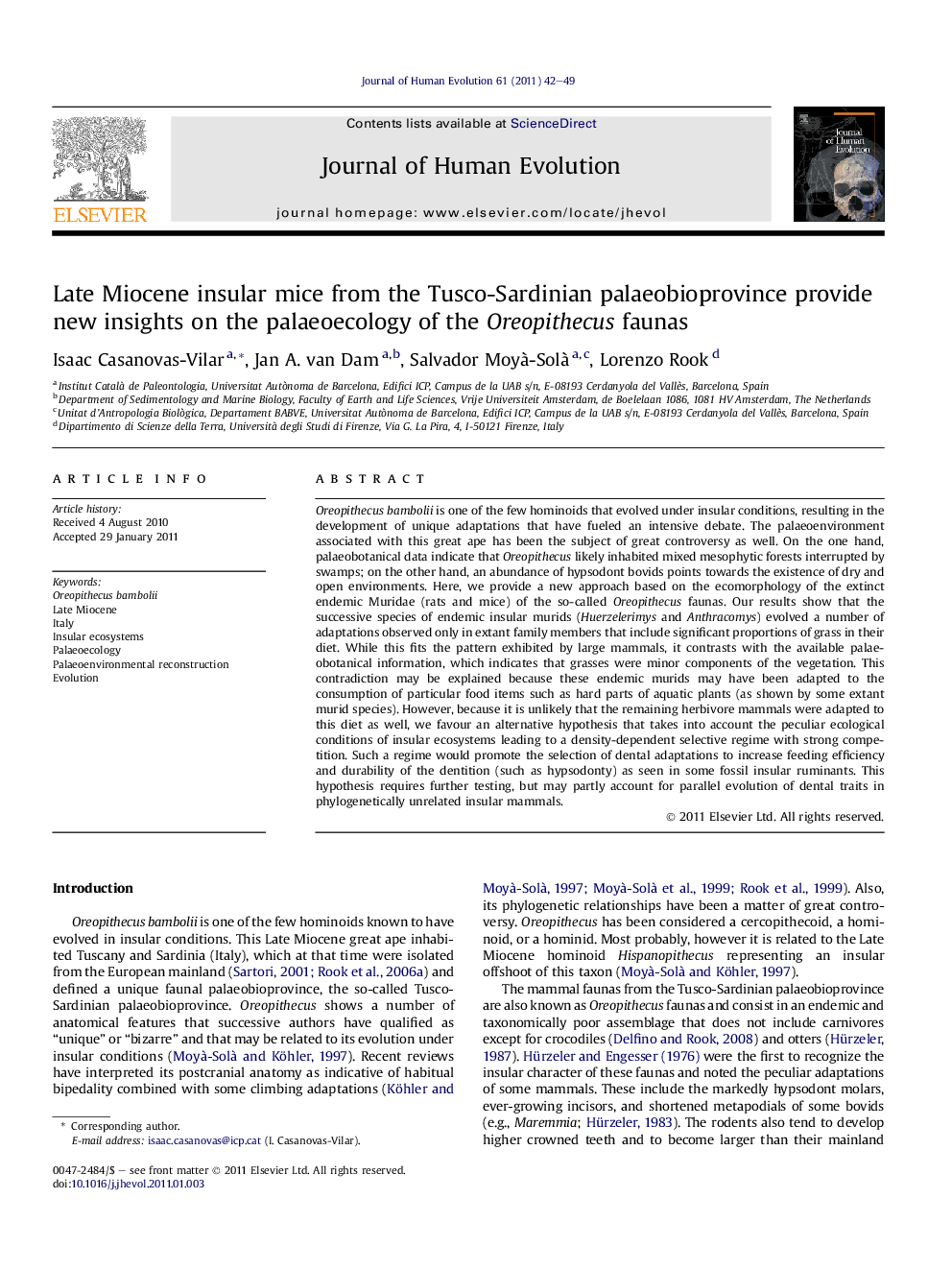| Article ID | Journal | Published Year | Pages | File Type |
|---|---|---|---|---|
| 4556564 | Journal of Human Evolution | 2011 | 8 Pages |
Oreopithecus bambolii is one of the few hominoids that evolved under insular conditions, resulting in the development of unique adaptations that have fueled an intensive debate. The palaeoenvironment associated with this great ape has been the subject of great controversy as well. On the one hand, palaeobotanical data indicate that Oreopithecus likely inhabited mixed mesophytic forests interrupted by swamps; on the other hand, an abundance of hypsodont bovids points towards the existence of dry and open environments. Here, we provide a new approach based on the ecomorphology of the extinct endemic Muridae (rats and mice) of the so-called Oreopithecus faunas. Our results show that the successive species of endemic insular murids (Huerzelerimys and Anthracomys) evolved a number of adaptations observed only in extant family members that include significant proportions of grass in their diet. While this fits the pattern exhibited by large mammals, it contrasts with the available palaeobotanical information, which indicates that grasses were minor components of the vegetation. This contradiction may be explained because these endemic murids may have been adapted to the consumption of particular food items such as hard parts of aquatic plants (as shown by some extant murid species). However, because it is unlikely that the remaining herbivore mammals were adapted to this diet as well, we favour an alternative hypothesis that takes into account the peculiar ecological conditions of insular ecosystems leading to a density-dependent selective regime with strong competition. Such a regime would promote the selection of dental adaptations to increase feeding efficiency and durability of the dentition (such as hypsodonty) as seen in some fossil insular ruminants. This hypothesis requires further testing, but may partly account for parallel evolution of dental traits in phylogenetically unrelated insular mammals.
